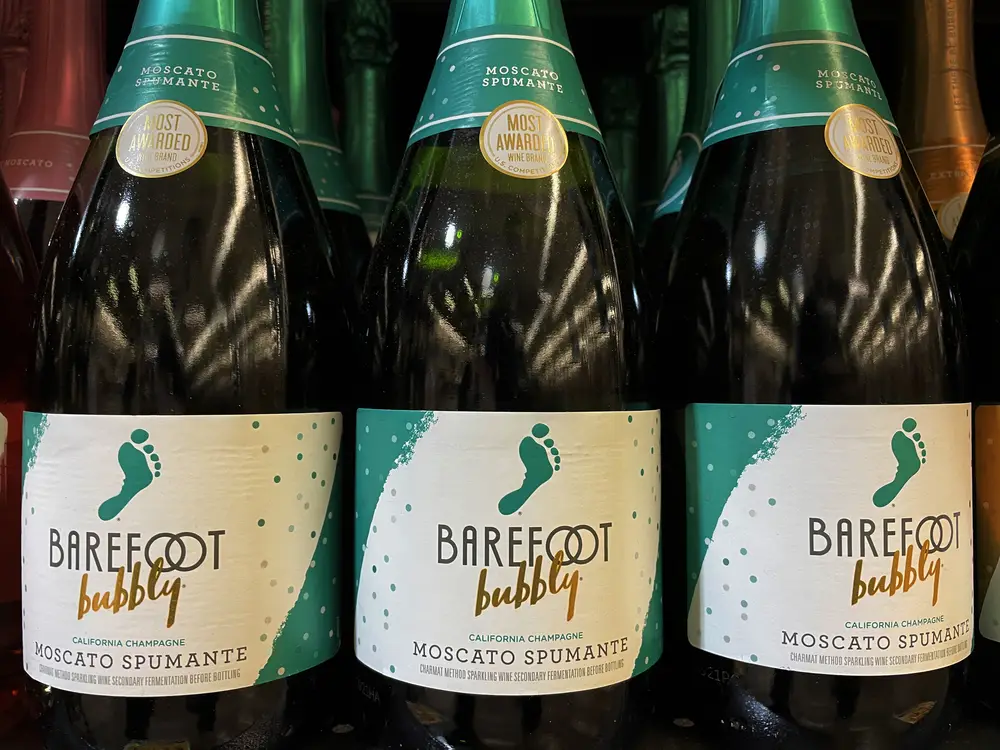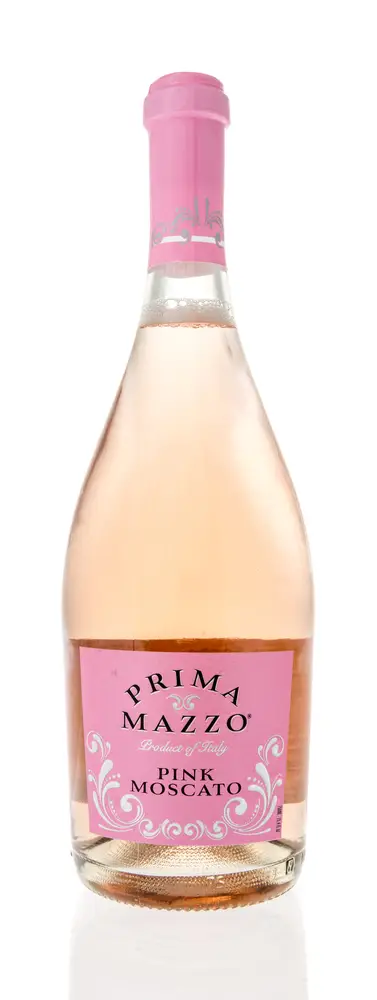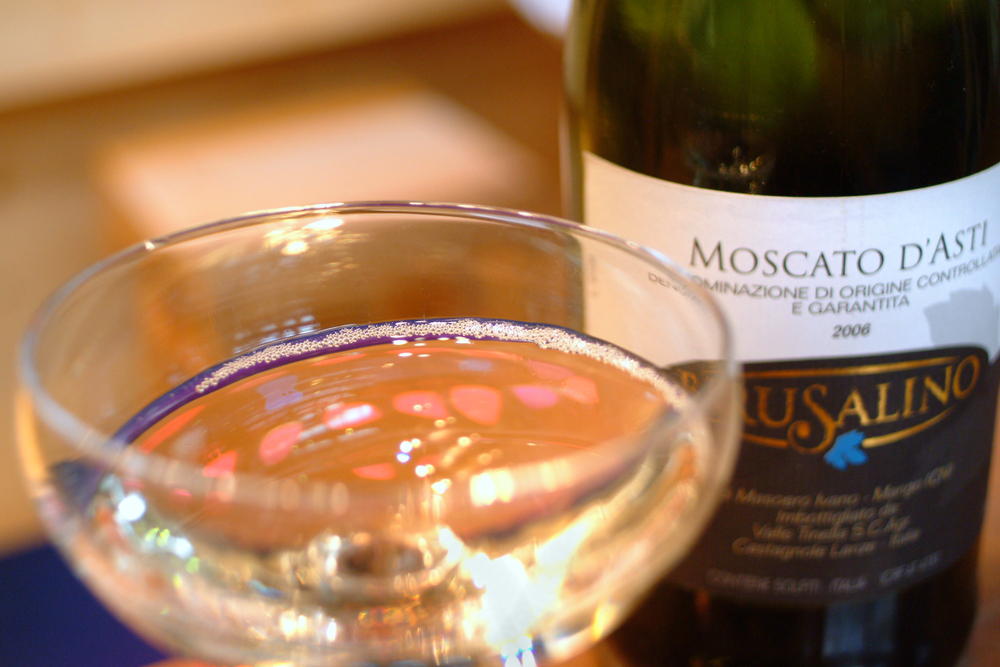If you live in the United States and love wine, chances are you’ve heard of a Moscato.
In recent years, these wines have grown in popularity in this country and have become a surprisingly diverse option with a light touch and a gentle body.
Their exploding popularity has expanded outside of America, though it has always remained popular in areas like Italy, France, and Australia.

What is Moscato Wine?
Moscato wine is an increasingly popular drink made from muscat grapes commonly grown in Spain, Chile, Australia, Italy, and the United States.
Muscat wines come in over 200 grape varieties and range from white, yellow, black, and pink.
As a result, Moscato wines come in many different flavors and styles, though they typically retain a reasonably sweet taste with a lower alcohol level.
Moscato wines are the sweetest of sparkling wines and much lower in alcohol, meaning they’re good as a dessert wine or when paired with various types of foods.
True muscat grapes and the best Moscato wines come from Italy, though just about any wine-growing region can produce them.
Moscato Taste Profile
Moscato’s growing popularity centers around its decadent array of flavors, and it is one of the more complex and tasty wines on the market.
For example, it comes with aromatics like honeysuckle, almonds, ginger, and orange blossom alongside green grape, peach, and citrus undertones.
The wine usually has a reasonably grape-style flavor, particularly when served chilled to enhance its sweetness.
These tastes help make Moscato one of the easier wines to enjoy immediately, especially for someone fairly new to wines. Its sparkling texture helps it go down a bit easier, as does its relative sweetness.
You also get less of an alcoholic kick, making it simpler to add to many meals without getting overwhelmed. One or two glasses are usually easily tolerable by most.
Depending on how long the grape was aged, you may notice some lingering floral aroma and smells, with touches of peach and nectarine.
So, while most Moscato wines have a reasonably similar taste profile and usually fall within the parameters mentioned above, you might notice some surprising differences between brands and styles, as Moscato comes in many types.
Related: Moscato vs Riesling taste differences.
Is Moscato Sweet or Dry?
Here’s the thing about Moscato. It is generally considered a sweet wine and should fit nicely into what most people consider an after-dinner or even dessert wine category.
It’s not quite as sweet as an authentic dessert wine but is almost always on the sweeter end because it has a higher residual sugar level thanks to shorter fermentation times. That said, its sweetness can vary.
Some winemakers may prefer drier wines and ferment a Moscato a little longer than usual.
That does tend to produce a wine with higher alcohol content and can often leave an aroma of mandarin, ripe pear, and honeysuckle on the wine.
You may also note floral characters, like rosewater and even wild strawberries in some Moscato wine types.
Moscato comes in several different styles that vary in sweetness and overall taste.
Most Moscatos, even in these varietal differences, will have a reasonably light body with an alcohol by volume (ABV) of about 5-6%.
That level is enough to give you a little buzz but usually not so high that you can’t get drunk after a few sips. That said, these levels may vary based on the Moscato style.
Types of Moscato Wines
Moscato d’Asti
This Moscato is made from Moscato bianco grapes from Piedmont, Italy.
It is one of the earliest and best expressions of the Moscato style. It has an ABV of 6.5% and contains a slightly fizzy texture with a delicate touch and aromatic flavor.
It comes with tastes of apricot, honeysuckle, and even rose petals.
Most people would not consider it an overwhelmingly sweet wine: it strikes a good middle ground.
Related: Differences between Moscato d’Asti and Moscato
Asti Spumante
While this Moscato has a similar name to the first varietal discussed, it is bubblier and has a more intensive sparkling texture than d’Asti.
It is also a little higher in wine and can get up to 9.5% ABV.
As a semi-sweet and mid-alcohol wine, it contains some tropical fruit notes, including a surprising and light pineapple touch.
People who like this wine may appreciate its middle-of-the-road style.
Muscat de Beaumes-de-Venise
This wine produced in Cotes du Rhone, France, comes from muscat blanc, a petits grains grape.
It typically comes with a relatively rich variety of colors, including red and nearly black tones.
Expect tastes similar to the Asti but with a lower alcohol level.
You’ll also notice this wine’s lack of fizziness. Unlike most Moscatos, it is a still wine suitable for those who don’t like sparkling textures.
Red Moscato
This Moscato varietal uses black muscat grapes, typically from Hamburg, Germany, to produce a fairly still and rich wine that sits well on many palates.
You also get some fairly rich berry flavors and aromas, particularly raspberry.
That surprising flavor mix should give you a robust array of different textures and flavors that make this wine a popular option for many different people.
Pink Moscato

Pink Moscatos refers to any muscat wine with a pink color: it’s as simple as that.
It is different than a traditional rose because of a few unique differences.
This popular wine is well worth exploring in a separate section due to its unique textures and increasing popularity, particularly throughout areas of the United States that prefer a lighter wine.
What is Pink Moscato?
Let’s pause here to explore Pink Moscato and why it has become popular in the United States.
First of all, many pop stars and social media influencers have adopted Pink Moscato as their drink of choice.
Instagram, Tik Tok, and other social media platforms are filled with people tagging Pink Moscato and celebrating its delicious flavor and overall light texture and style.
What’s the reason for this exploding popularity?
First, Pink Moscato has a sparkle like Champagne but costs less to produce and sell.
That helps make it an excellent option for people with limited wine budgets or those looking to cut back on expenses in general.
The light texture is pretty fruity, with touches of peaches and berries, without being too overbearingly sweet.
The secret of Pink Moscato’s popularity also lies in its pink color, which many celebrities love.
The funny thing about that color is how it is made. Pink Moscato starts life as a white wine made from the muscat blanc grape.
Then, winemakers add a little red wine (usually Merlot) to it to change its colors and tastes. Though some winemakers create Pink Moscato with red grapes, most add Merlot to make it pink.
Is Pink Moscato Red Wine or White Wine?
Classifying Pink Moscato can get a little tricky, thanks to its unique combination of wine types.
Though it is primarily white in its overall wine combination, the red wines added to it do make it something in between.
Not quite a rose, which has a similar color, but something all its own. As a result, you can expect different textures and tastes compared to other wines, including a bit of strawberry.
Related: Is it okay to mix red and white wine?
Moscato Food Pairings
Moscato wines go well with many different foods thanks to their variety of tastes and textures.
They are particularly good with some fresh kinds of seafood, including oysters and prawns. The unique texture of these fishy foods blends surprisingly well with Moscato by bringing a light acidity to the meal.
However, Moscatos also go really well with scallops, fruits, decadent desserts like chocolate cakes, ice creams, and even baklava!
Sharp cheeses also go very well with Moscatos, particularly anything with an authentic dense flavor, like sharp cheddar or rich aromas, like feta or even bleu cheese.
If you’re a fan of Asian foods, such as Thai, Vietnamese, and rich Japanese fishy dishes, you’ll also love Moscato.
This wine helps bring a touch of sweetness with a low-alcohol punch that brings out the flavors, rather than overpowering them, making them easier to enjoy.
Final Thoughts
These Moscato wines provide diverse tastes and textures that make them an excellent option for new wine fans.
However, even long-term wine drinkers may find it works well as a light wine for special occasions and can even work as a Champagne replacement in some scenarios.
Try it out today to see what kind you like the best!
- Shrimp Cocktail (and More) Wine Pairing Guide - 09/06/2022
- What Wine Serving Sizes Look Like: Standard Size and More - 08/06/2022
- How Much Sugar is in Wine: Glass and Bottle Sugar Content - 08/06/2022






